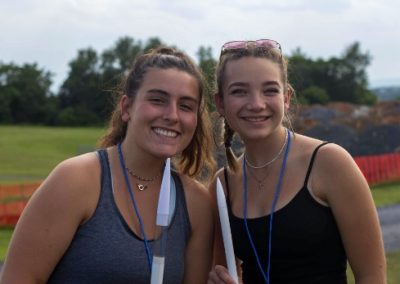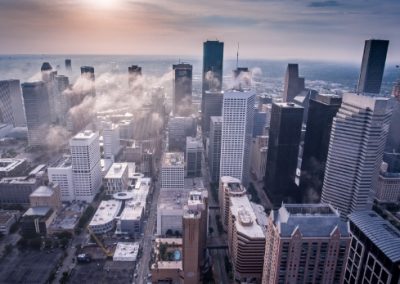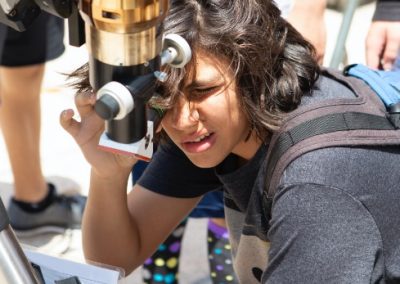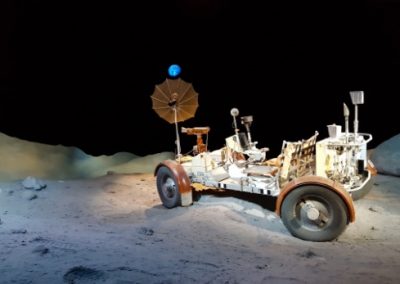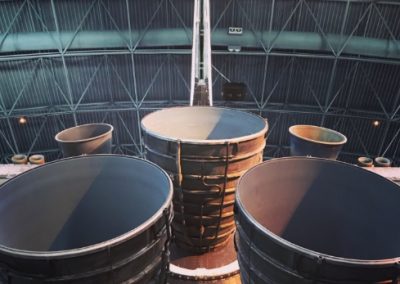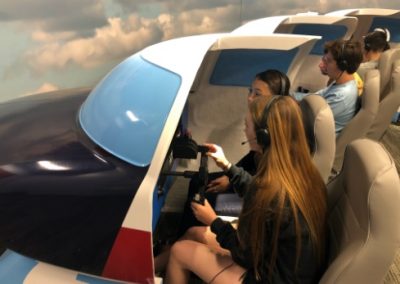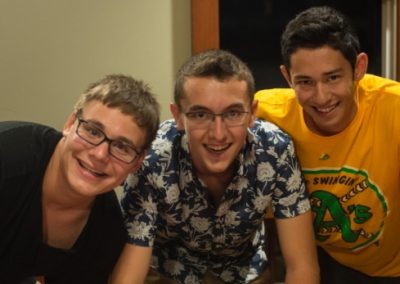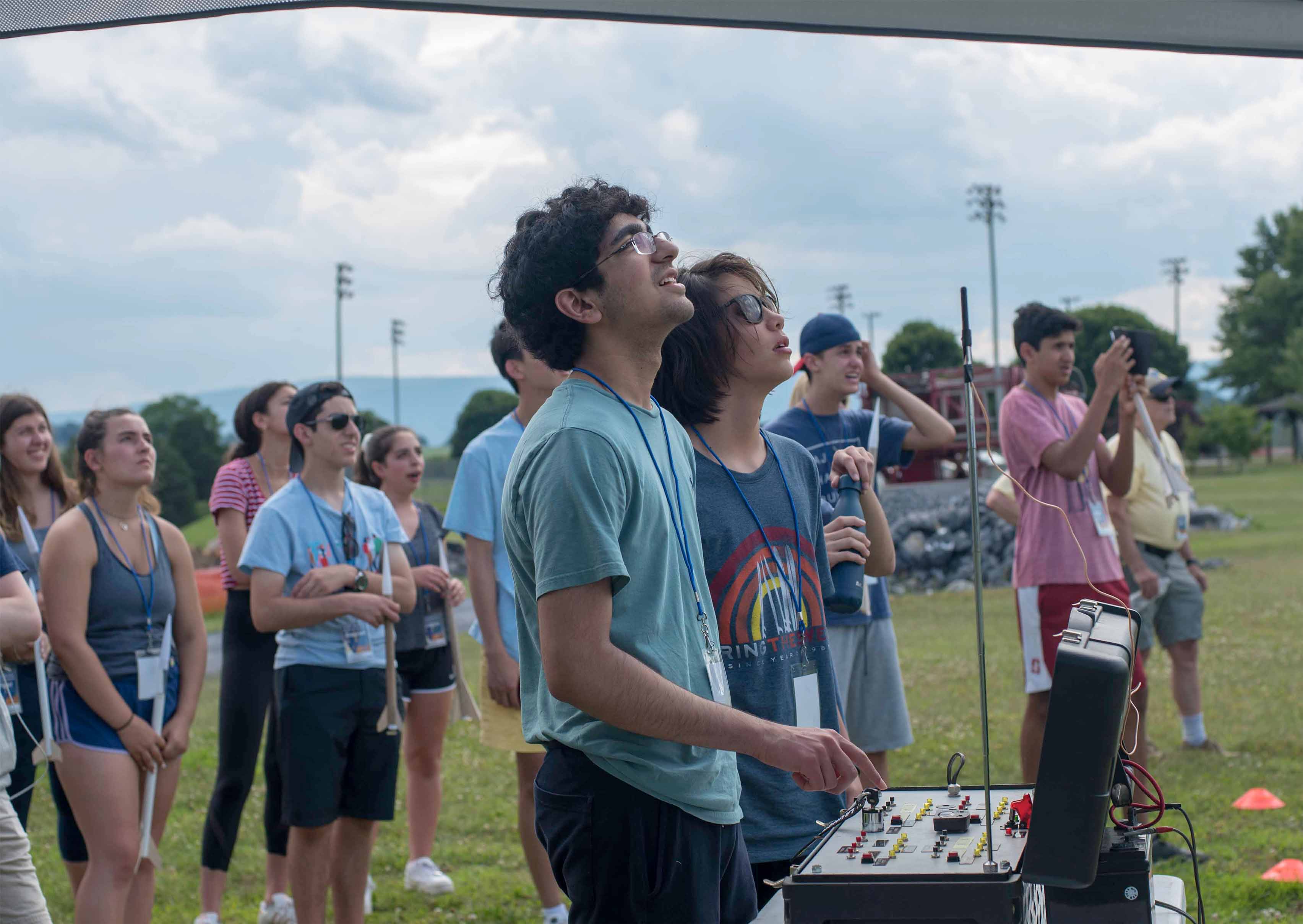Smithsonian Student Travel | Washington, D.C. & Houston
Highlights
-
Learn about aerodynamics, then build and launch your own rocket
-
See historic aircraft at the Smithsonian’s Steven F. Udvar-Hazy Center
-
Use a telescope to stargaze with a NASA Solar System Ambassador
-
Go behind the scenes with NASA scientists at the Johnson Space Center
Itinerary
This itinerary represents our plan for the program. However, we may implement changes if we identify opportunities to improve the experience, to take advantage of unexpected events, or to accommodate local schedule changes.
Washington, D.C. • 5 days • During your time in the nation’s capital, meet with industry pioneers, interview local experts, discuss pertinent topics regarding women in the profession, and deepen your understanding about what motivates humans to venture into outer space. Learn about the history of flight and the evolution from airplanes to spacecraft at the Smithsonian National Air and Space Museum, located right on the National Mall. Visit the Steven F. Udvar-Hazy Center, and see groundbreaking aircraft up close including the Enola Gay, the SR-71 Blackbird, and the space shuttle Discovery. Examine the past, present, and future of space exploration in discussions with government officials and historians. Visit monuments in Washington, D.C., and explore the diverse foods and flavors of the city’s restaurant scene.
Shenandoah National Park • 2 days • Take a crash course on the basics of aerodynamics, build your own model rockets, and launch them from the valley floor on a road trip to Shenandoah National Park. Hike and explore Shenandoah’s unique ecology with a local guide, stargaze away from the city lights, and embark on a guided astronomical journey through the lens of a telescope with a NASA Solar System Ambassador.
Houston • 5 days • Fly to Houston and meet with scientists on the cutting edge of space exploration at NASA’s Johnson Space Center. Have lunch with an engineer and hear about experiences in zero-gravity orbit and reflections gained from orbiting the Earth. Next, go behind the scenes to visit NASA’s high-tech training facilities. Learn how Mission Control communicates with the International Space Station, speak with local experts and brainstorm what it would really take to colonize Mars, and taste-test food that astronauts take on missions. Take a lesson on the physics of flight and aircraft design and maintenance, then try your hand at drawing up a flight plan. See if you have what it takes to pilot an aircraft during a flight simulation at the Lone Star Flight Museum, then try a thrilling ride of a different kind as you test the limits of modern engineering and experience near-zero-gravity at the Kemah Boardwalk. Enjoy freshly caught Gulf seafood and cool off by Galveston Bay.
As the program concludes, wrap up your independent project to share with your group and celebrate your time together.
Return • Travel Day • Fly from Houston to your final destination.
Smithsonian Student Travel Expert
A Smithsonian Student Travel Expert will join the group for a portion of the itinerary. Our experts are professionals in their field and tie in their knowledge and experiences with the themes of the program. Throughout their time with the students—generally five days—they share their insights and passion for the region through talks and informal conversations, connecting with students in meaningful ways. Meet the experts who are joining the student trips below.
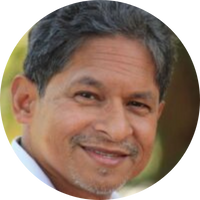
Raja GuhaThakurta, Professor of Astronomy & Astrophysics (joining the June 22 departure)

Paul Glenshaw, Filmmaker & Writer (joining the July 21 departure)
Paul Glenshaw is an independent filmmaker, artist, and writer whose multidisciplinary work covers art, history, and aviation. He is co-director, writer, and producer of the World War I documentary The Lafayette Escadrille, distributed nationwide to PBS stations in 2021. His work for the Smithsonian Associates include his popular online series Art+History, Jazz in Paris, and other history lectures, as well as drawing instruction and history tours. He is a longtime contributing author and editor for Smithsonian’s Air & Space magazine, with expertise in the Wright brothers and pre-WWI aviation. Paul is the author of the theatrical concert To Swing Through the Sky, a commission by George Mason University that traces the twin histories of jazz and powered flight. His drawings made at the Folger Shakespeare Library were featured on their Shakespeare and Beyond blog. He is currently creating a series of drawings made from the remains of Civil War casualties at the National Museum of Health and Medicine. At the start of the 2020 pandemic, he co-created The Seven Tones Project, which paired musicians and filmmakers to create 40 short films based on the music of Duke Ellington. He began his career at the National Gallery of Art, selling postcards in the bookstore, and then printing exhibit labels.
What to Expect
Accommodations • Accommodations at each of our stops are comfortable hotels or hostels. Leaders reside with students throughout the program.
Climate • Summers in Washington, D.C., are warm and humid with daytime temperatures ranging from 85–95°F (30–35°C) and cooling off at night. Houston is similarly warm and humid.
Meals • We enjoy meals at local restaurants and cafes, and sometimes take picnic lunches to local parks.
Sign up for two programs & save $500!
$300 tuition discount + no application fee

